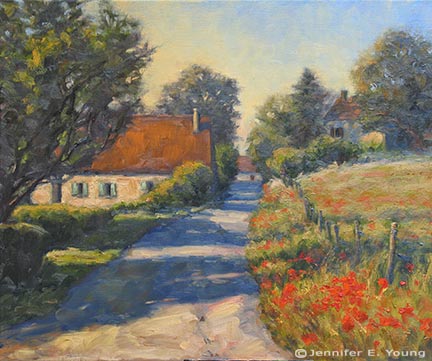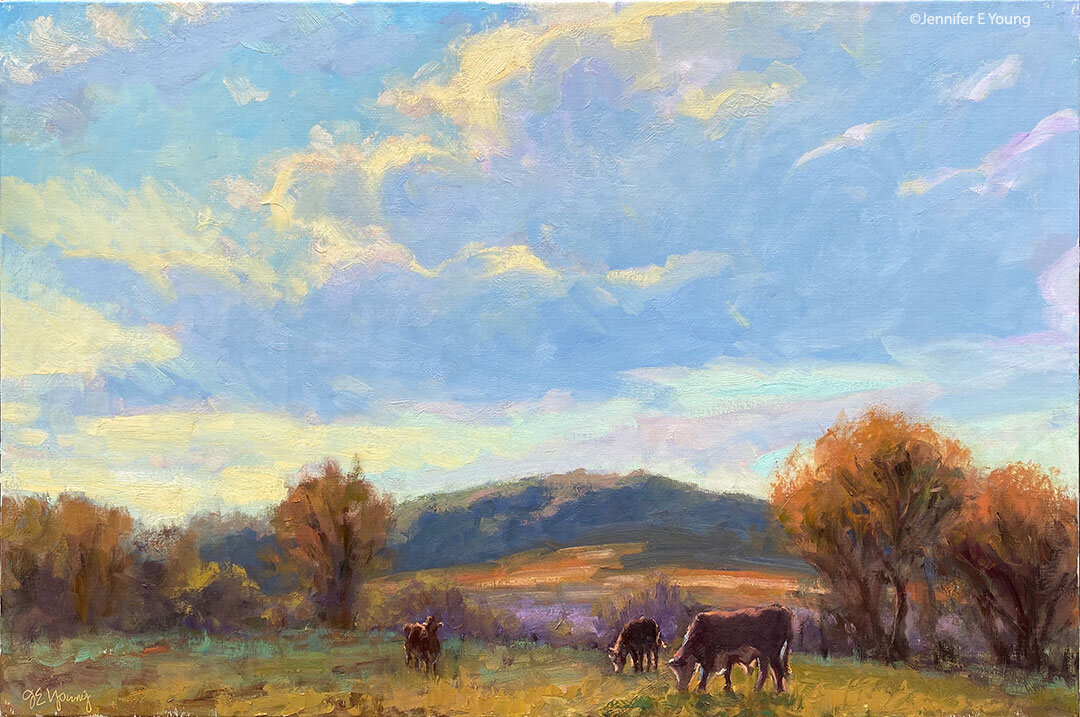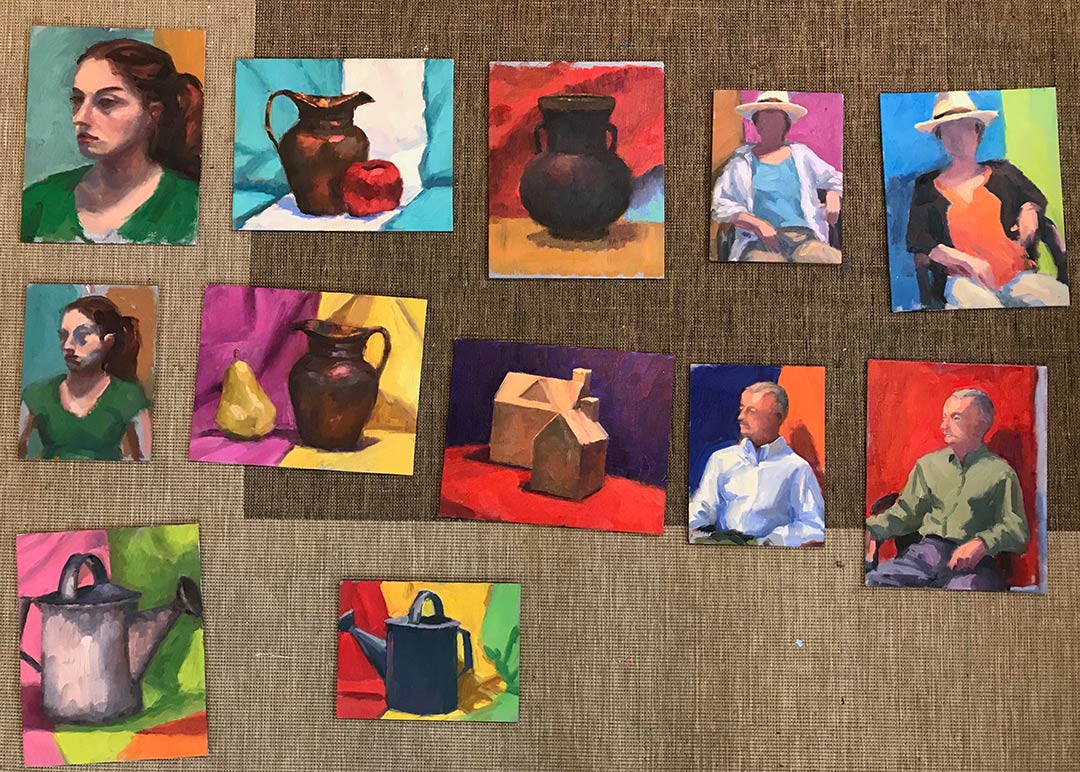I recall a conversation I had some time ago with a gallery owner. I was admiring the work of a fellow artist in the gallery and commenting on how much this artist's work had grown and matured. The gallery owner agreed. They were good paintings, and popular with collectors too. If only they could get the artist to give them more work!
As it turned out, the artist had just recently changed from being a part-time painter with a day job to being an artist full-time. Only, this person was anything but, watching movies, surfing the net--doing most anything rather than painting. According to the gallery owner, ironically, once given the luxury of unlimited time, the artist's productivity plummeted. I could understand this.
So many artists I know can so easily get into the habit of working toward deadlines. But when no deadline looms, (no shows, openings, classes or other projects on the horizon) their commitment (and often their work) can languish. I'm sure all working artists with kids and/or day-jobs everywhere are playing the world's tiniest violin in sympathy! But there is something to be said for having externally imposed time limits.
Of course there are many possible reasons why artists don't create (such as emotional constraints brought on by fear, insecurity, depression, etc.) But when I had a day job, I was forced to carve out a finite amount of time in which to do my creative work, and looking back I am amazed at how productive I was. I remember being up until 2 a.m. painting, even after a full day of work at the bank, going to the gym, showering, and scraping together some dinner (I also remember being single then, and younger too!) Of course, I lamented not having more time to paint, but at the same time, my time limitations lit a fire under me to make the most of each window of opportunity.
But once I started working full time at my painting, I, too, languished for a time due to complete lack of structure and many, many distractions around the home studio. Being the ADD sort that has many other interests doesn't help! What did finally help me was that I began to structure my business in such a way that it set external limitations and schedule requirements. But I may have overdone it a bit. I traveled a lot, I maintained a rigorous work schedule to supply work to the 8 galleries I was working with at the time. And when that wasn't enough busy-ness for me, I taught classes, maintained my website and blog, and eventually opened a studio-gallery with monthly shows.
But here's the thing. Even though for a while, the money was good and the trips were fun, ultimately this "system" didn't work for me either. Everything was urgent and important, and constantly being in emergency mode was like going from zero to 100 with no brake in between. And you know what can happen when you speed along at 100 miles/hour? Crash. (Of course you can also crash going 20 miles/hour, but it doesn't hurt nearly as much.)
A part of me began to realize what I was doing, so I began eliminating again. Fewer galleries, fewer trips, and eventually letting go of the downtown space and again setting up a home studio. But what I hadn't realized (or had forgotten) was that eliminating much of the externally imposed deadlines and obligations without creating an internal structure to replace it would leave me feeling more lost and disorganized than "free."
Many of you readers out there are probably familiar with Stephen Covey's book The 7 Habits of Highly Effective People. It's become a real classic in the business/success genre, and I'd heard his audio version many years ago but had rather forgotten about it until recently. My favorite part of the book is "Habit 3: Putting First Things First," which includes his famous "Time Management Matrix":





















